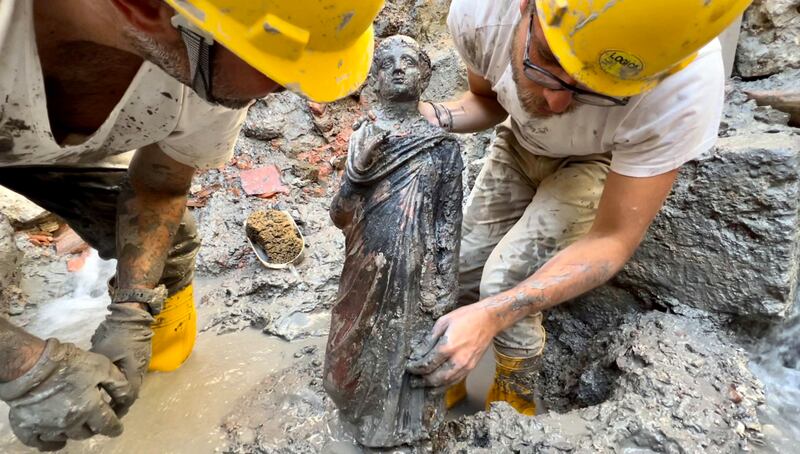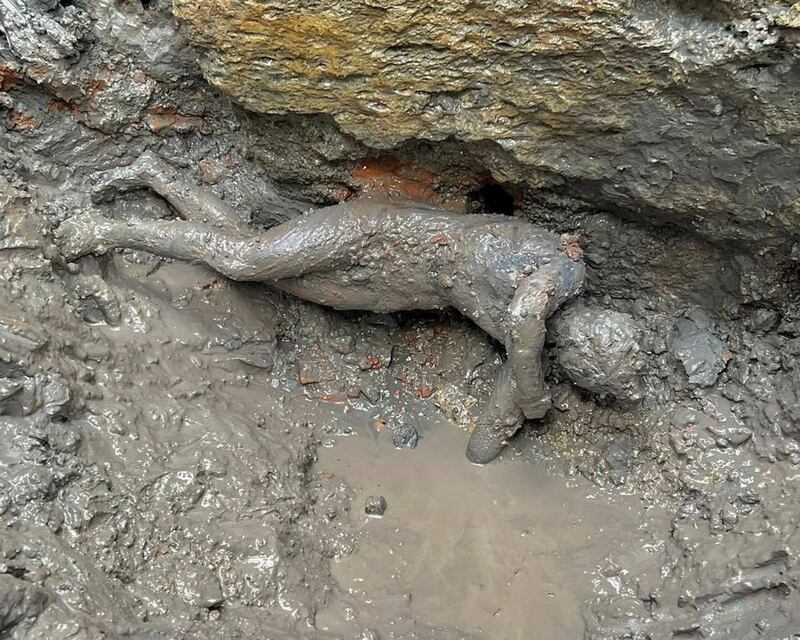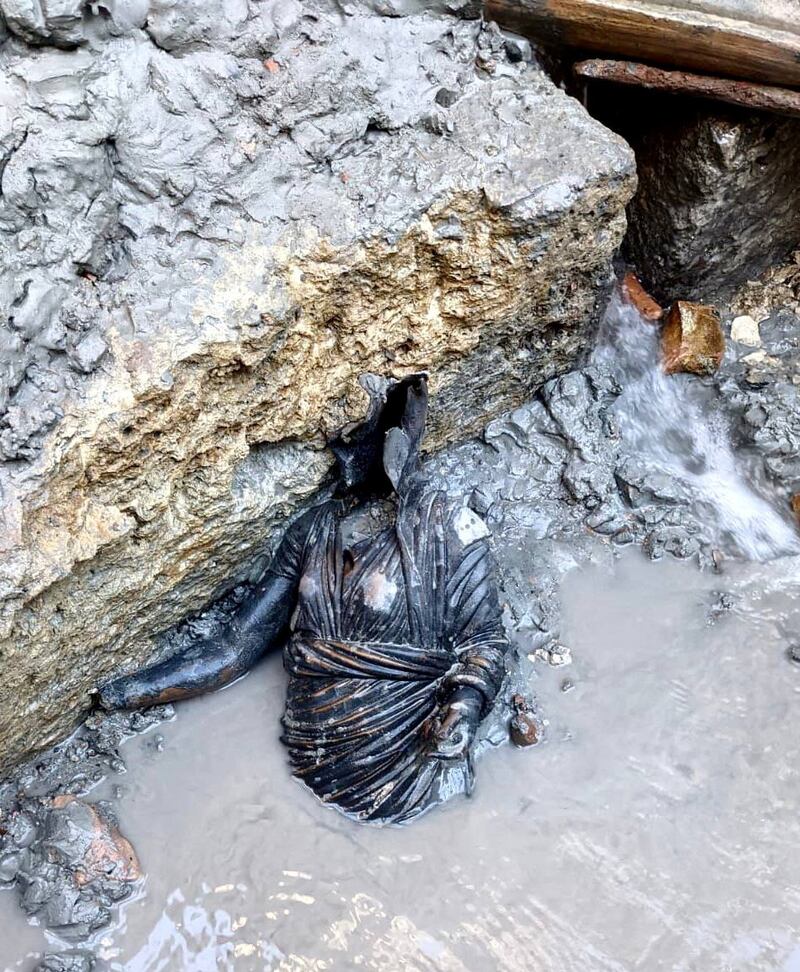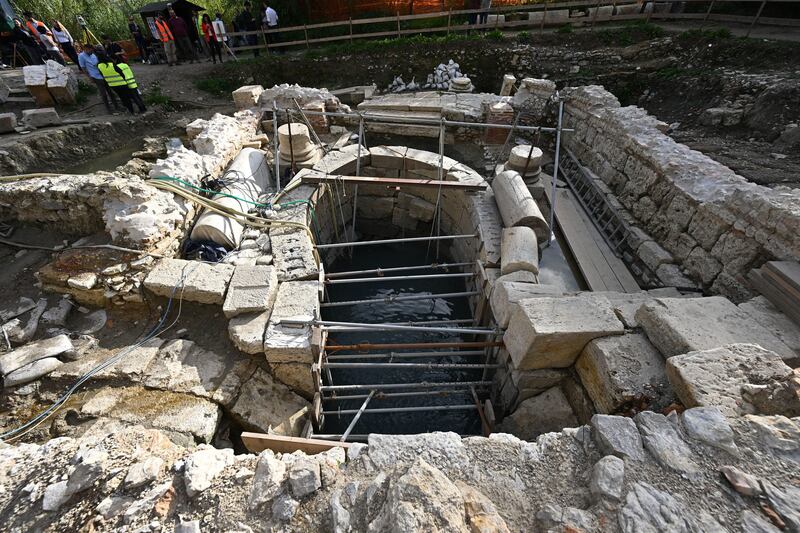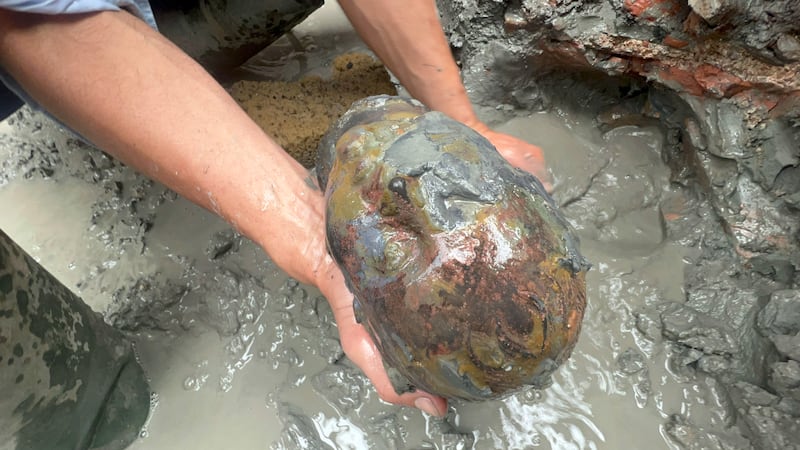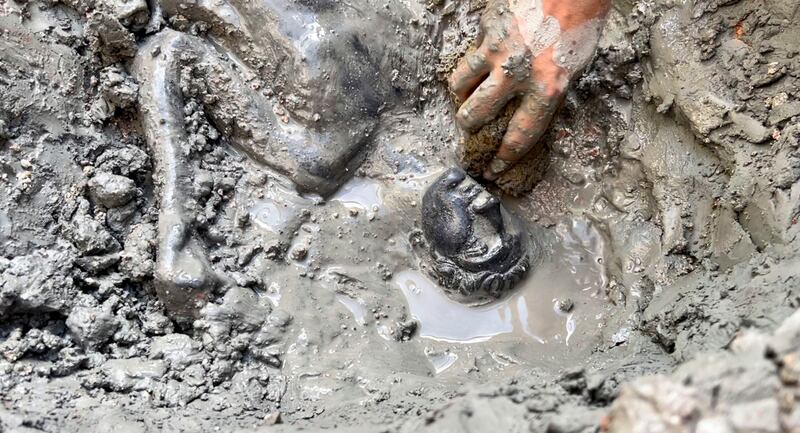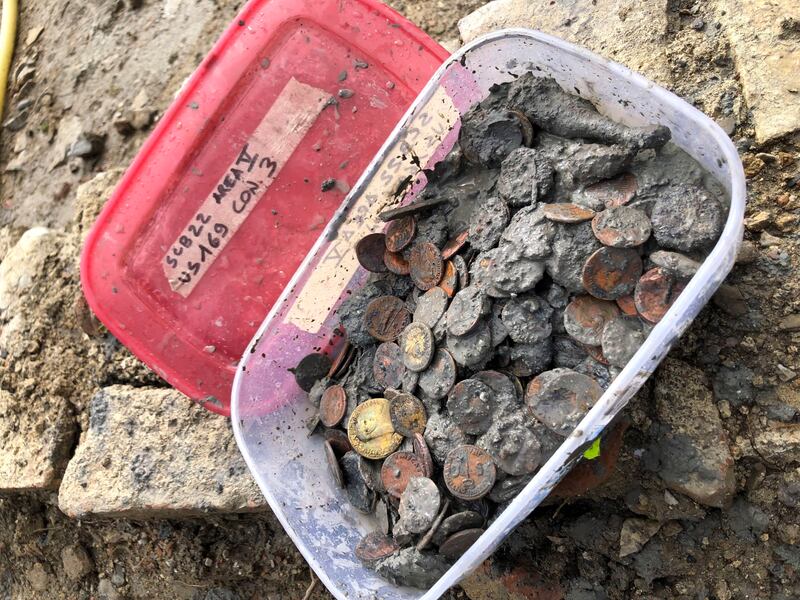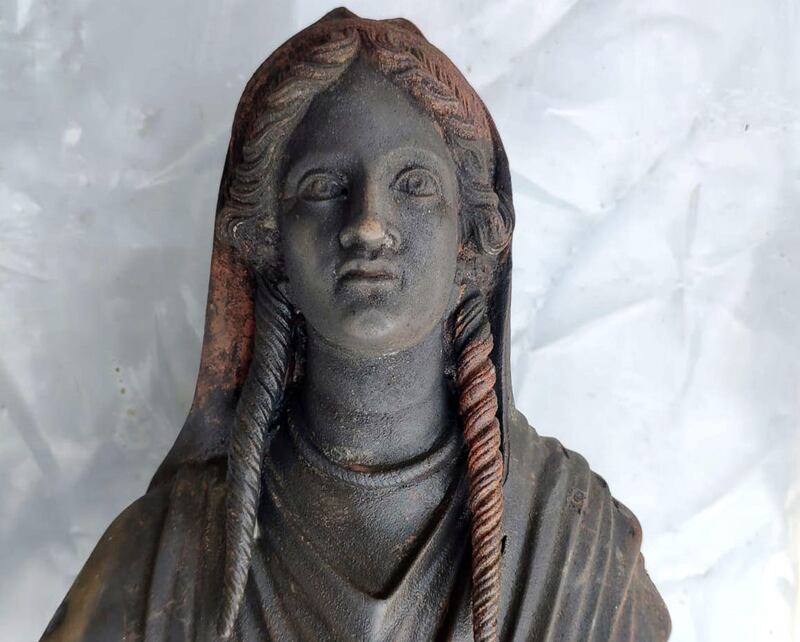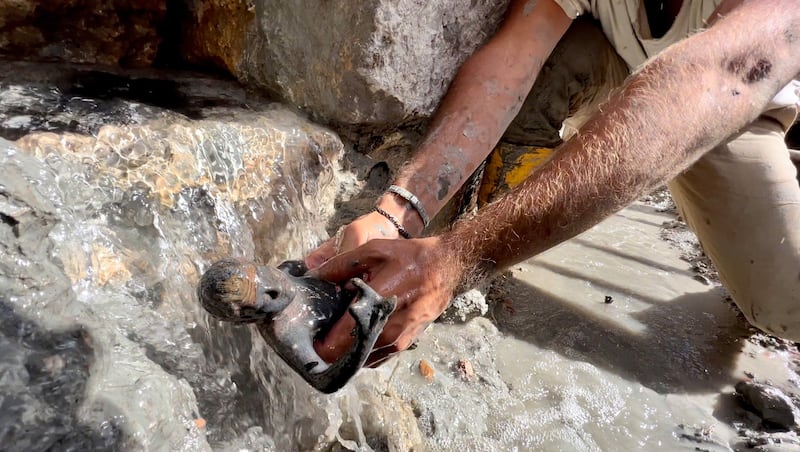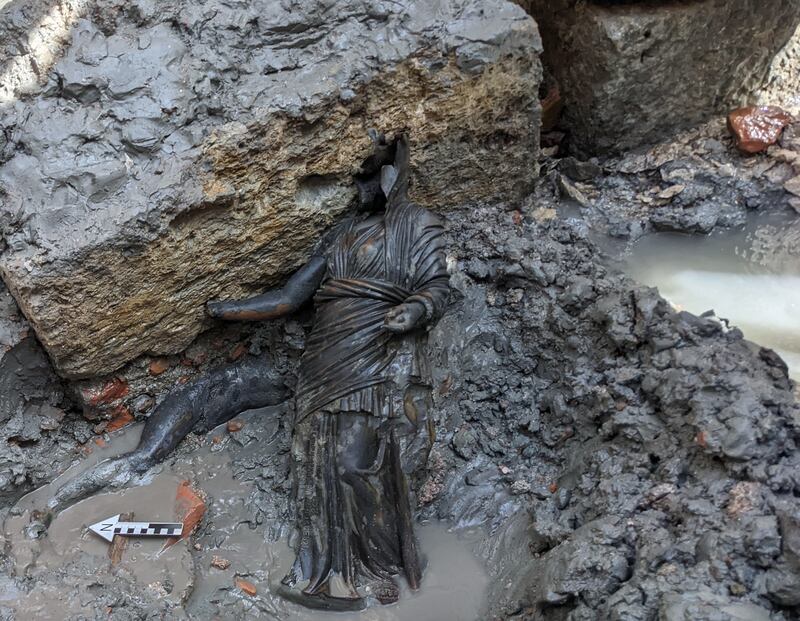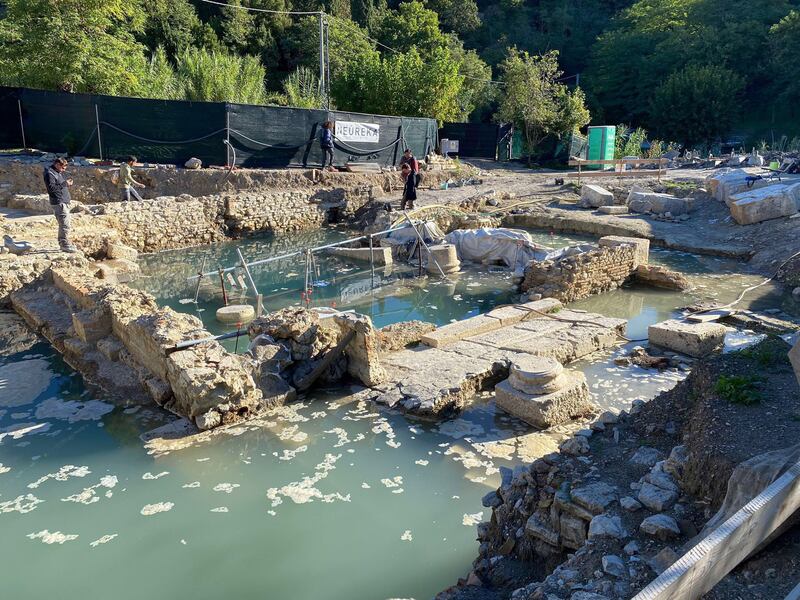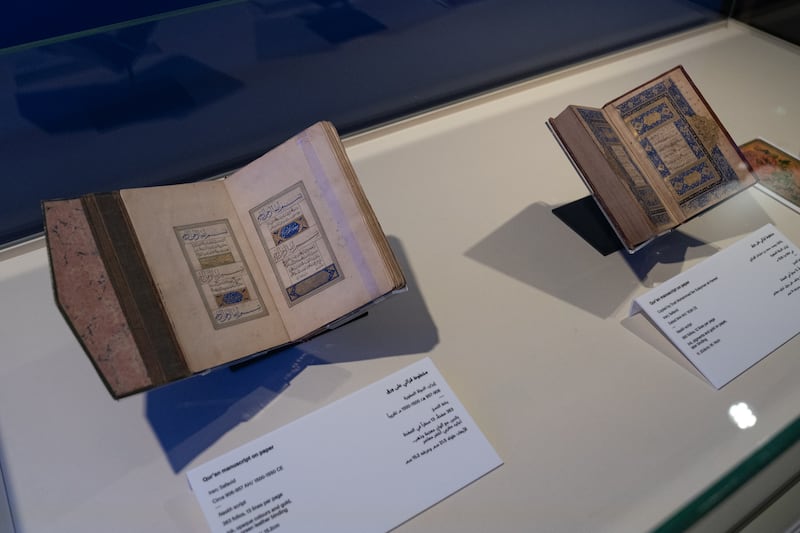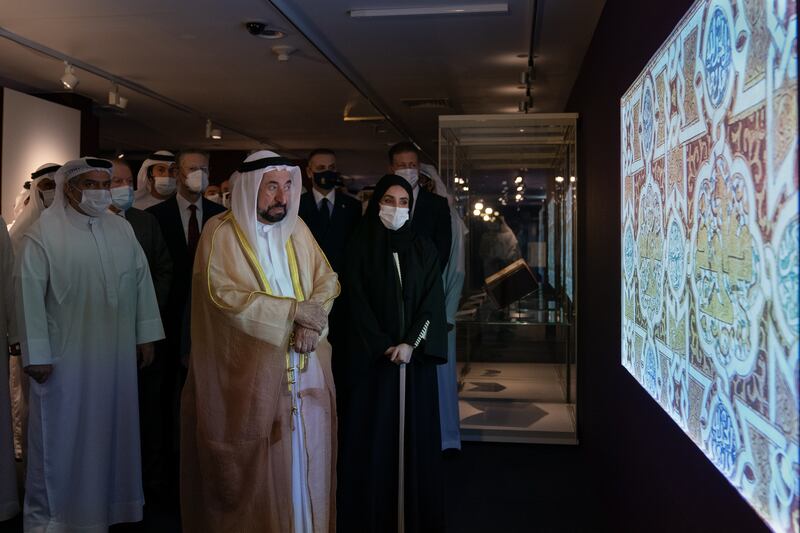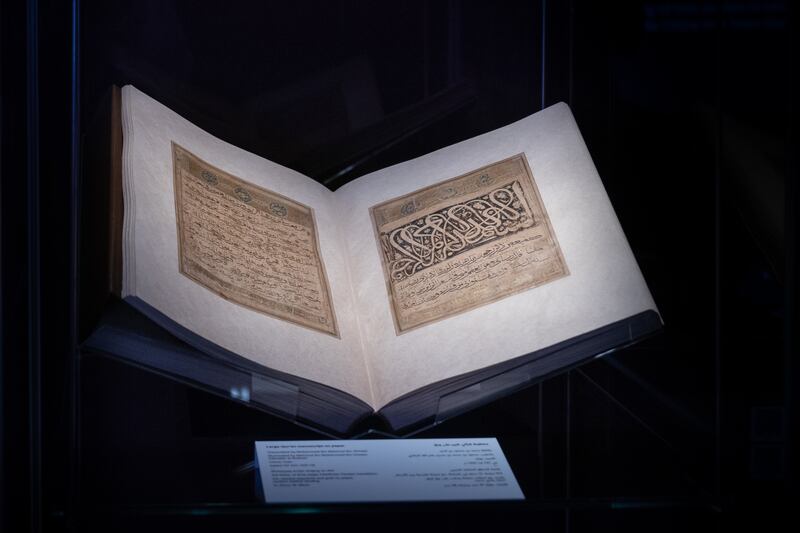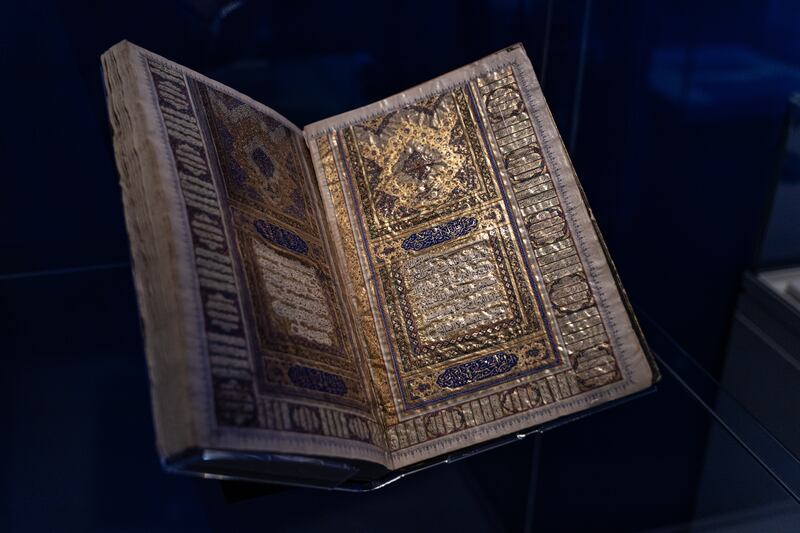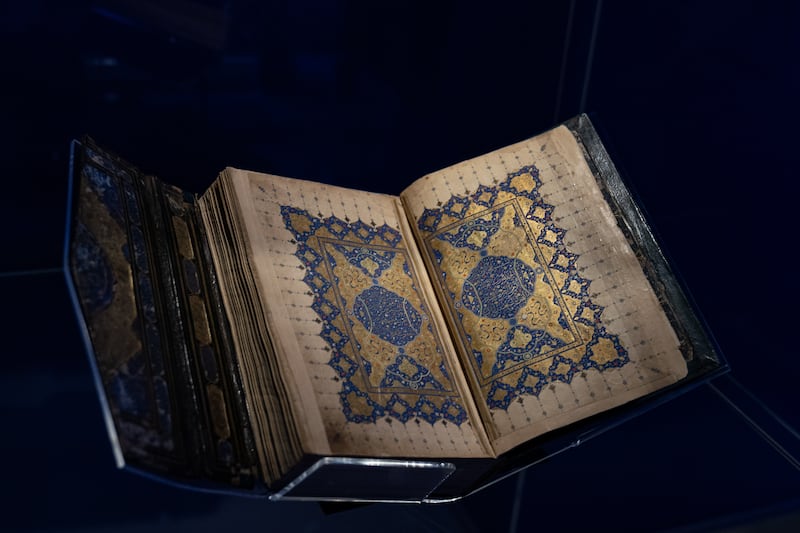Italian archaeologists have discovered "exceptionally" preserved bronze statues in a Tuscan bath that date back 2,000 years to ancient Roman times.
The 24 bronze statues were unearthed along with about 6,000 bronze, silver and gold coins, from under the ruins of an ancient bathhouse in San Casciano dei Bagni, a hilltop town in the Siena province.
Italian authorities announced that the extraordinary discovery of the 2,000-year-old bronze statues is considered one of the most significant archaeological discoveries in the Mediterranean and will “rewrite history".
Jacopo Tabolli, who co-ordinated the dig for the University for Foreigners in Siena, said the discovery of the bronze statues sheds new light on the end of the Etruscan civilisation and the expansion of the Roman Empire between the 2nd and 1st centuries BC. The find is the largest deposit of bronzes from this era in Italy.
This particular period in Roman history was marked by wars, and yet the bronze statues show evidence that Etruscan and Roman families prayed together to deities in the sacred sanctuary of the thermal springs.
“While there were social and civil wars being fought outside the sanctuary … inside the sanctuary, the great elite Etruscan and Roman families prayed together in a context of peace surrounded by conflict,” Tabolli said.
“This possibility to rewrite the relationship and dialectic between the Etruscan and Romans is an exceptional opportunity.”
The statues, including depictions of Apollo and Igea, the ancient Greek god and goddess of health, have both Etruscan and Latin inscriptions, an indicator that these families co-existed during this period.
The two-dozen bronze figurines and objects were found in a perfect state of conservation, thanks to the mud that protected them over the years. Aside from entire human-like figures of deities, other bronze sculptures include individual body parts and organs. These would have been used as offering to the gods in hopes of medical cures.
The Italian Ministry of Culture has also announced the construction of a new museum in the area to house the antiquities for public viewing.
